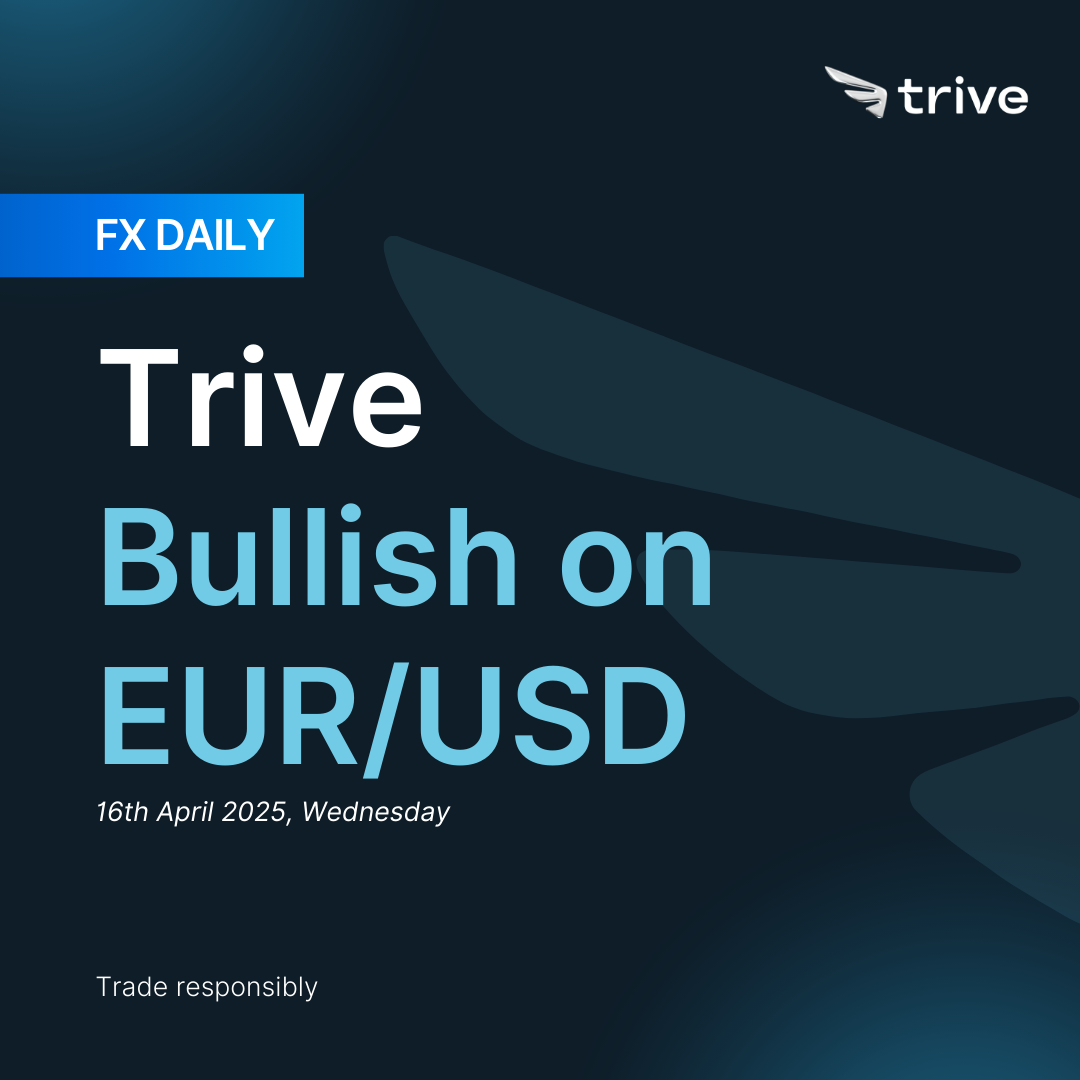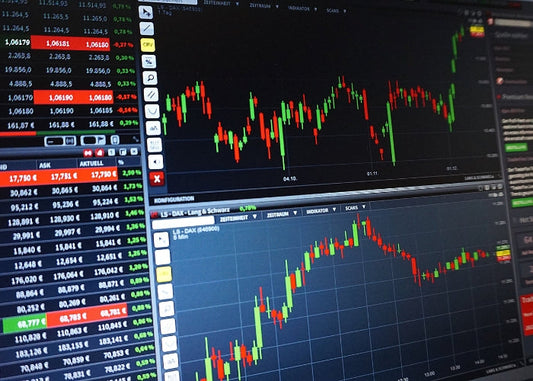FX Daily: Trive Bullish on EUR/USD

The baseline outlook for the EUR remains bullish, as it is the world's second most liquid currency during times of crisis. In contrast, the USD is expected to remain under pressure amid ongoing uncertainty.
EUR: Alternative of USD
The EUR has been one of the best-performing currencies since the U.S. tariff announcement, outperforming traditional safe haven currencies such as JPY and CHF. The primary reason lies in its status as the second most liquid currency in the world and its role as a preferred alternative to the dollar for global FX reserves. At the same time, market participants appear relatively optimistic that the EU is not inclined to escalate trade tensions with the U.S., particularly after the EU agreed to a 90-day pause in countermeasures that were scheduled to take effect on April 15. Additionally, the prospect of increased fiscal spending across Europe—especially in Germany—has added structural support to the euro, making it more attractive than in previous years.
Looking ahead, the market's attention will shift to the April ECB meeting, where a 25bp rate cut is fully priced in, despite the presence of some divergent views among Governing Council members. The primary focus will be on forward guidance and updated economic projections. On the guidance front, markets will be watching for any indications that the ECB is preparing to wind down its easing cycle in the coming months. On the projections side, this will be the first meeting to include new staff economic forecasts, which are expected to factor in Germany’s anticipated fiscal stimulus—likely resulting in upgrades to the ECB’s medium- and long-term growth and inflation outlooks. As a result, the meeting could deliver another “hawkish cut,” potentially leading to further euro strength. Beyond the ECB meeting, market participants will also closely monitor trade developments. As long as trade tensions persist and the “sell America” theme continues to build, euro-area assets may stand out as one of the few viable destinations for capital rotating out of U.S. markets—offering additional support to the EUR.
In short, barring a strong resurgence of the “U.S. exceptionalism” narrative—characterized by robust U.S. growth, a resilient consumer, and subdued inflation—and assuming Europe does not fall short in its efforts to reform and stimulate its economy, the baseline outlook for the EUR remains bullish, given it’s simply the world’s second most liquid currency in such crisis.
USD: Recession concern
Over the past week, the USD has remained under pressure following the announcement of new tariffs, gradually losing its traditional safe haven status. The primary driver can be attributed to the combination of an unnecessary trade war and a series of increasingly uncertain policy decisions, which are significantly eroding both consumer and business confidence. As a result, any potential USD-positive impulses are being outweighed by rising concerns over slower growth. Although Trump announced a 90-day pause on reciprocal tariffs, it has done little to support the USD. This is largely because a minimum 10% tariff floor remains in place during the pause, and China is excluded from this suspension—facing an additional 25% tariff hike. This brings the total tariffs to 145%, further escalating trade tensions and triggering continued USD sell-off. Despite the temporary tariff easing, global trade uncertainty remains elevated due to the unpredictability of Trump’s protectionist agenda. This environment is likely to continue weighing on business sentiment and delaying investment decisions as firms await greater clarity on U.S. trade policy. Overall, as long as trade tensions persist, the USD is expected to stay under pressure for the time being.
On the domestic front, the latest CPI and PPI releases have added further downward pressure on the USD. U.S. inflation slowed to 2.4% y/y in March, down from 2.8% y/y in February—below the market expectation of 2.5%. Core CPI (excluding food and energy) also eased to 2.8% y/y from 3.1% in February. On a monthly basis, headline CPI fell by 0.1%, while core CPI increased by only 0.1%, down from 0.2% previously. The March inflation report came as a welcome surprise and seemingly gives the Federal Reserve more flexibility should economic growth continue to soften. Additionally, headline PPI declined by -0.4% m/m from 0.1%, while y/y dropped to 2.7% from 3.2%. Core PPI also fell by -0.1% m/m from 0.1%, with the y/y measure easing to 3.3% from 3.5%. This soft inflation print points toward a subdued Core PCE reading as well, especially with the sharp drop in airline fares—an influential component of PCE—likely dragging prices lower. Most components came in softer than the previous month, except for Nursing Home Care, which ticked up to 0.2% from 0.1%. Following the CPI and PPI data, Pantheon Economics noted that the numbers imply a 0.13% m/m increase in the core PCE deflator for March, reducing the y/y rate to 2.6% from 2.8%. While the data suggest that the Fed’s disinflation process is progressing well, the renewed impact of tariffs could reignite inflation, potentially forcing the Fed to delay early rate action. As of now, markets are still pricing in the first rate cut in June, with a total of 89 basis points expected to be cut throughout 2025.
Looking ahead, the USD calendar is relatively light, with no major market-moving events scheduled. As such, market focus will remain on trade developments. In the absence of any positive breakthroughs—particularly with China—the USD is expected to remain under pressure.

Disclaimer
This material is provided for informational purposes only and does not constitute financial, investment, or other advice. The opinions expressed in this material are those of the author and do not necessarily reflect the views of Trive International. No opinion contained in this material constitutes a recommendation by Trive International or its author regarding any particular investment, transaction, or investment strategy. This material should not be relied upon in making any investment decision.
The information provided does not consider the individual investment objectives, financial situation, or needs of any specific investor. Investors should seek independent financial advice tailored to their individual circumstances before making any investment decisions. Trive International shall not be liable for any loss, damage, or injury arising directly or indirectly from the use of this information or from any action or decision taken as a result of using this material.
Trive International may or may not have a financial interest in the companies or securities mentioned. The value of investments may fluctuate, and investors may not get back the amount they originally invested. Past performance is not indicative of future results.
For more information about Trive International, please visit http://trive.com/int
Additional Information
Investing involves risk, including the potential loss of principal. Diversification and asset allocation strategies do not ensure a profit or guarantee against loss. The content in this material is subject to change without notice and may become outdated or inaccurate over time. Trive International does not undertake any obligation to update the information in this material.
By accessing this material, you acknowledge and agree to the terms of this disclaimer. If you do not agree with these terms, please refrain from using this information.
暂无评论
主页
特里夫
TriveHub





0条评论